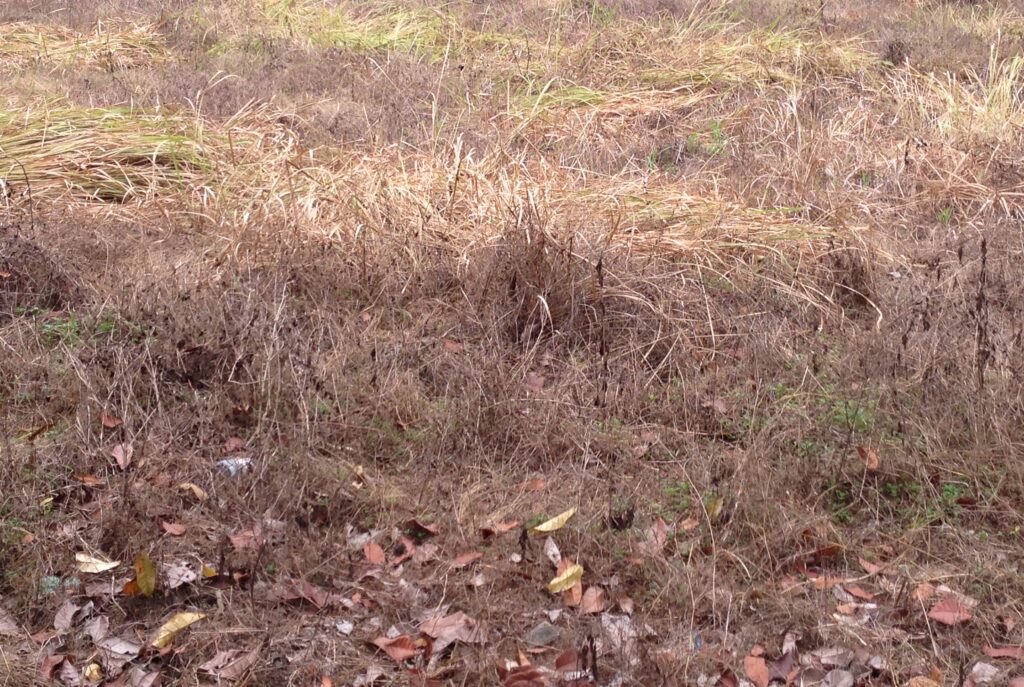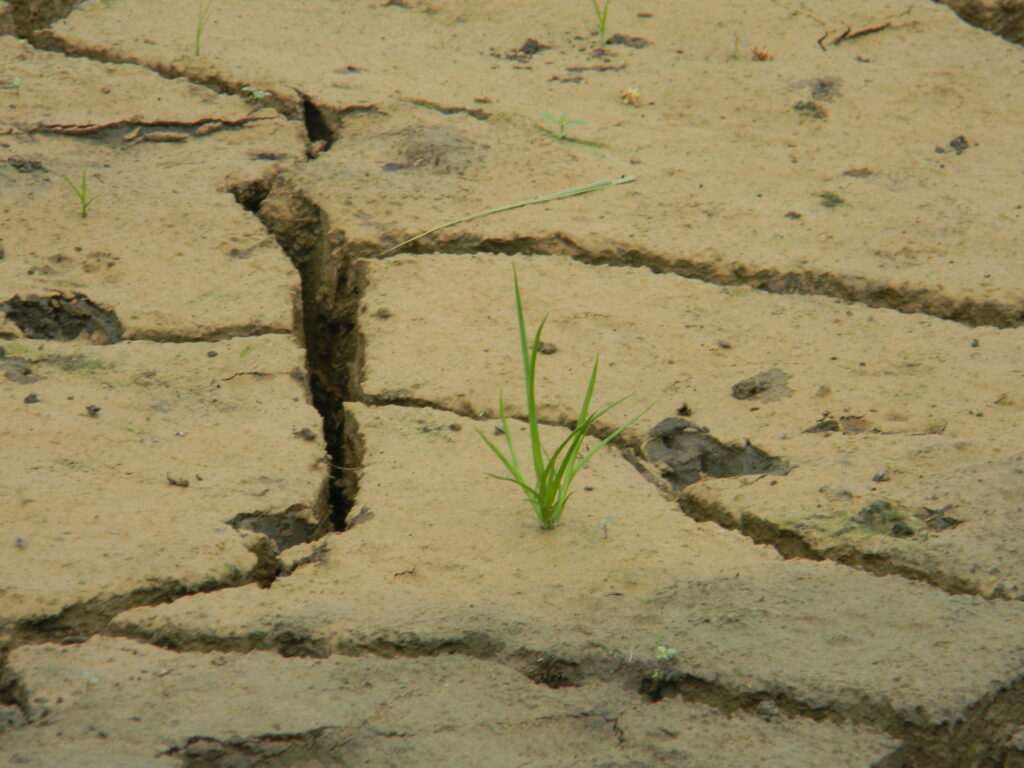Text and Photos by Henrylito D. Tacio
The bad boy from the Pacific will soon be back!
An El Niño is likely to happen after June or the latter of this year, according to the Philippine Atmospheric Geophysical Astronomical Services Administration (PAGASA).
“After June, there is a high probability that El Niño will occur,” PAGASA Davao Station chief meteorological officer Lolita Vinalay was quoted as saying during her recent guesting at Kapihan sa PIA (Philippine Information Agency).
The national office of the weather bureau will issue an El Niño Watch, which means there is a 50% chance of having an El Niño. An El Niño Advisory will be issued if there is already an El Niño and the impact of the climate anomaly is felt, she explained.
“This weather disturbance is considered an enemy that could cause damage to the environment, agriculture, and marine life. As such, it has destructive consequences to human life,” points out the Laguna-based Philippine Council for Agriculture, Aquatic and Natural Resources Research and Development (PCAARRD).
As food production is most likely to be affected with the dry spell brought about by El Niño, the Davao regional office of the Department of Agriculture (DA) is now doing preparatory interventions, PIA’s Rudolph Ian Alama reported.
In the PIA news item which Edge Davao published, the following interventions are being prepared: introduction of drought-tolerant varieties of crops, expanded irrigation areas, intensified campaign on the enrolment of crop insurance, information education campaign of water saving techniques, and buffer stocking of seeds and pesticides. Also being done are the open surface pumps and spring development projects.
“Then, we have this seasonal climate advisory and farm outlook advisory which are given to inform our farmers,” said Joedel Leliza, the regional disaster risk reduction focal person of DA-11, during the PIA forum.
The climate phenomenon, however, will be felt around the world. In fact, respected scientists have already predicted the global temperatures will go “off the chart,” according to a Guardian report.
In their initial prediction, scientists said the return of El Niño will be in the latter part of 2023. “This will lead to extreme weather around the world,” the Guardian report stated. “Global temperature is likely to exceed 1.5-degree Celsius.”
No one knows precisely when El Niño first struck. Historians are dating the phenomenon at least as far back as the early 1500s, when the Spanish conquistadores entered South America amid raging storms. Some 400 years before that, there were some records of terrible sweeping through pre-Columbian communities.
Originally, Spanish fishermen named the event as “Corriente del Niño.” The word “corriente” describes the appearance of warm ocean current flowing from time to time in the eastern equatorial Pacific region along the South American coasts. The word “Niño” was traditionally associated with the birth of Baby Jesus, as it was observed around Christmas. It was used to be considered a local event along the coasts of Peru and Ecuador. Through the years, “corriente” was dropped, leaving only “El Niño.”
El Niño has a cooler counterpart in the form of La Niña (from the Spanish word for “girl”). It refers to the large-scale cooling of the ocean surface temperatures in the same region in the equatorial Pacific, coupled with a reversal of the overlying atmospheric conditions. In many locations, La Niña cold episodes produce the opposite climate effects to El Niño.
“El Niño and La Niña events are caused by, and contribute to, naturally occurring climate variability,” explained the UN World Meteorological Organization (WMO). “They disrupt the normal patterns of tropical precipitation and atmospheric circulation and are considered to be the opposite phases of air-sea interactions collectively referred to as the El Niño/Southern Oscillation (ENSO).”
El Niño and La Niña occur every two to seven years and typically last for 9 to 12 months. Both have widespread impacts on weather around the world.
One of the most memorable El Niño happened in 1997-1998. It rose out of the tropical Pacific in l1997, bearing more energy than a million Hiroshima bombs. By the time it had run its course eight months later, the giant El Niño of 1997-1998 had deranged weather patterns around the world, killed an estimated 24,000 people, displaced six million and affected some 111 million. The guesstimated cost of property damage worldwide: US$34 billion.


The Philippines was not spared. “The fury of El Niño began in the third quarter of 1997,” noted a briefing paper published by the PCAARRD. “El Niño weather conditions struck mostly in the Southern and Central Philippines.”
Among the provinces badly hit by El Niño in Mindanao were South Cotabato, North Cotabato, Davao del Sur, Sultan Kudarat, Maguindanao, Sarangani, Davao del Norte, Davao Oriental, Davao City, Cotabato City, and General Santos City.
The long drought affected about 497,238 agricultural families, including tribal communities. Some 74 people died, some from starvation. Other reports said sources of potable water in General Santos City and adjacent areas dried up. Davao del Sur also experienced shortage in potable water. Some portions of Mount Apo, Mount Matutum, and forested areas in Maragusan suffered from forest fires.
The dry spell brought about by El Niño was so severe that the indigenous communities had a hard time finding food, thus forcing themselves to eat wild yam. In the province of Cotabato, drought affected farm lands and cattle; lumads reportedly ate kayos just to survive.
“The 1997-98 event was a wake-up call,” Dr. Michael Glantz, of the National Center for Atmospheric Research in Boulder, Colorado was quoted as saying. “Awareness of what El Niño can do to societies and economies is now high.”
According to PAGASA, the climatic indicators of El Niño phenomenon in the country are as follows: delayed onset of the rainy season, early termination of the rainy season, weak monsoon activity and isolated heavy downpour with short duration, far tropical cyclone track, and lesser number of tropical cyclones entering the Philippine Area of Responsibility (PAR).
The Philippines Recommends for Water-Saving Technologies for Rice and Other Crops, published by the Department of Science and Technology (DOST), said farmers can still vegetable crops even in times of drought and/or dry spells. “Vegetable cropping after rice usually coincides with the dry season,” it noted. “This crop may use residual soil moisture, supplemented by irrigation, underground supplies, or tank storage. Farmers may also take advantage of the drop in river levels to cultivate riverbanks.”
In water-scarce areas, farmers can make the most efficient use of available water. “To do this, the growers decide how much and which crops to plant, or whether to plant at all,” the book said. “However, it is unwise to plant crops that cannot be properly irrigated because there are no drought-tolerant or -resistant vegetable varieties in the market.”
The DOST publication said that irrigation and water use in vegetable farming varies with the production system and ecoregion. “Vegetables are known as succulent products,” it explained. “In general, these consist of more than 90% water.”
As such, vegetables require good water supply for optimal productivity. “They are able to produce a crop during short periods of high moisture availability and respond well to controlled delivery of water, which enhances water use efficiency,” the book said. “On the contrary, drought conditions drastically reduce vegetable productivity.”
Here are more tips from the book on how to grow vegetable crops when water is scarce:
· Proper water management planning must consider all uses of water, from the source of irrigation water to plant water use. It is very important to differentiate between crop water requirements and irrigation or production water system requirements.
· Irrigation systems are rated with respect to application efficiency, which is the fraction of water that has been applied to the irrigation system and that is available for plant use. Applied water that is not available for plant use may have been lost from the crop root zone through evaporation.
· For good crop production, there is a need for an appropriate match between the soil physical properties controlling water movement and retention and the irrigation system. This affects the amount of water that can be stored in the soil after irrigation, the depth of wetting, wetting pattern, and aeration status.
· The characteristics of the irrigation system, crop needs, soil properties and atmospheric conditions must all be considered to properly schedule irrigations. Poor timing or insufficient water applications can result in crop stress and reduced yields.
· Various crop management practices such as mulching, using shelters, and planting in raised beds help conserve soil moisture; and prevent or reduce soil runoff, erosion, and degradation. The use of organic materials as mulch can help enhance soil fertility, structure, and other properties.
· Crop selection is important where water is expected to be in short supply. Plants with shallow root systems will require more frequent irrigation to maintain a healthy growth rate. Shallow-rooted plants include lettuce, pechay, onions, and most other bulb/root/tuber crops, celery, and cabbage family plants. Deep-rooted crops include tomato, corn, sweet potato, and melons. Those with intermediate root depth are beans, peppers, squash, and cucumbers.

